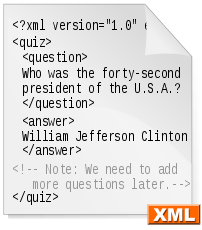
- Image via Wikipedia
INTRODUCTION TO XML & COMPONENT CONTENT MANAGEMENT
Pressures are increasing to create more content faster, in more languages, and deliver that content to more channels, simultaneously doing so faster and cheaper than before. Yet most organizations allow content to be siloed, so content is created, recreated and recreated resulting in higher costs, lower productivity, increased inconsistency and lack of consistent branding. Part of the issue associated with effectively managing the creation, management and delivery of content is organizational structures, but there is also the problem that organizations manage documents and web pages, not the content itself (e.g., product description, feature, abstract).
Web Content Management systems which tend to manage HTML pages, which correspond to the published web pages. Traditional Content Management systems typically managed content as files (documents). In other words, most content management systems manage documents or pages not chunks (components) of information. Component Content Management (CCM) systems manage content at a granular (component) level of content rather than at the page or document level. Each component represents a single topic, concept, or asset (such as an image or table). Components are assembled into multiple content assemblies (content types) and can be viewed as components or as traditional pages or documents. Each component has its own lifecycle (owner, version, approval, use) and can be tracked individually or as part of an assembly. CCM is typically used for multichannel customer-facing content (marketing, usage, learning, support). CCM can be a separate system or be a functionality of another content management type (such as ECM). Component Content Management systems let you create and manage intelligent documents.
Continues @http://www.cmswatch.com/CCM/Intro/

Filmtools
Filmmakers go-to destination for pre-production, production & post production equipment!
Shop Now
![Intoduction to XML & CCM 6 Reblog this post [with Zemanta]](http://img.zemanta.com/reblog_e.png?x-id=0753ec7b-857a-42ce-9c72-7c5b4030fab1)













